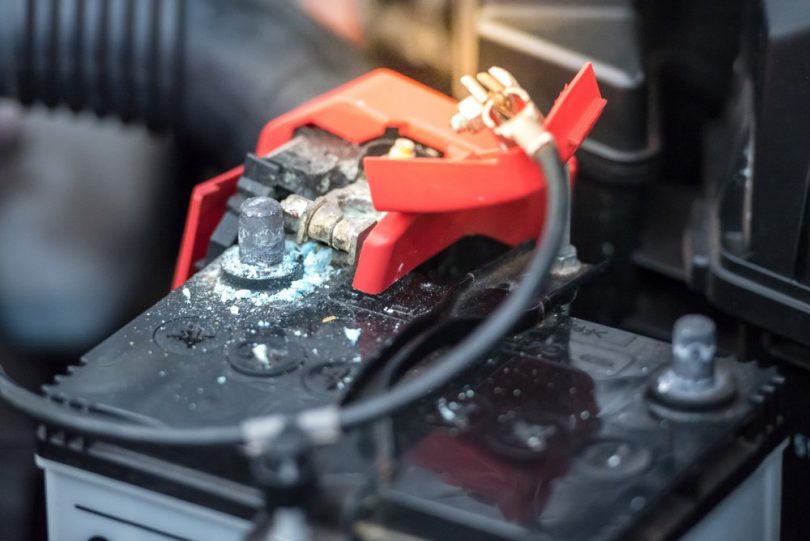It’s not uncommon for car batteries to die, but it’s not always the battery’s fault.
If your car won’t start after you jump start it, and your battery is working properly, it may be the cable causing the problem.
Check them out and find out how often you should replace them.
Symptoms of Bad Battery Cables

**Photo Courtesy: YouTube
1. Dim headlights
You may have a cable problem if your fog lights and headlights flicker.
Dim headlights indicate that not enough electricity is being supplied to the headlights because the battery connection is poor.
2. Car won’t start
Make sure the battery cables are connected to the right battery terminals. Damaged battery cables will show corrosion.
The acid in the battery is heated due to the heat generated by the engine when driving. As a result, the cables are damaged, resulting in corrosion.
3. Battery cable is damaged or frayed
Smooth, rust-free batteries should have no nicks or corrosion. The performance of the cable can be impacted by fraying or damage.
Changing the cables should not be a problem since they are inexpensive.
4. Low voltage battery
The alternator won’t reach full charge with a damaged positive battery cable, resulting in a low voltage battery.
Normally, you should read 12.6V of voltage from your car battery when it is not running, and between 13.7V and 14.7V while your car is running. The positive battery cable has a problem if the voltage reading is different.
5. Full system shutdowns
You can experience engine failure even while driving your car because of a dead battery. If the battery is running low, then something is wrong with the electrical system. Typically, cables can be the problem if they are loose or not connecting properly.
6. Reduced Interior Power
There can be flickering or fading in your car lights. You may experience audio and navigation system lagging. This can indicate a problem with the battery terminals.
7. No power to vehicle
It is likely that you will hear a lot of tapping noises when you try to start your vehicle if the ground strap is bad. As the starter solenoid is opening and closing repeatedly, this noise is produced.
The reason for this is that it does not receive enough voltage, again, the cable connecting to the negative terminal of your battery does not receive enough voltage.
8. Corroded battery terminals
Corrosion is the most obvious sign of a bad battery. As a result of being subjected to acid fumes from your battery acid.
A battery terminal that has corroded is less able to conduct electricity, and can even block it completely.
How Do You Diagnose the Bad Battery Cables?

Things you need
- Extender tester cables
- Ohm meter checker
- Multimeter
1. Corrosion test
- Pull the battery cable and perform an Ohm meter test to determine whether it has been internally corroded, but this is rarely possible or practical.
Here’s how to do the Ohm meter test:
- It is also possible to use an extended tester cable, by removing the ends of the cable from the battery and starter while leaving them in place but not attached.
- You can also perform a reverse circuit test, in which you keep the cables connected to the devices and then test between the device’s terminals and the battery terminal. An alternator with a positive output and your positive battery connection is what you are aiming for.
2. Voltage drop test
Round-trip voltage drop should not exceed 0.5V. You can measure this with a standard multimeter using the voltage setting.
Step 1: Put one lead on the positive battery post and the other on the starter stud.
Step 2: Record the voltage while the assistant cranks the engine.
Step 3: Record the voltage on the negative side as well.
Step 4: You should have less than 0.5V by adding the two numbers. An over 0.5V number indicates both or one of the cables is bad.
3. Examine the connectors
- Check out the negative cable on the battery. By focusing on both the battery connection point also where it connects to the chassis. Remove any dirt or deposits from these points.
- Observe the wear and tear. Take a close look at both cables, looking for cracks or breaks in the casing that may reveal wires. Ensure that the connections are tight as loose cables can cause problems.
When to Change Your Battery Cables?
If the cables are frayed or damaged, or if they show signs of corrosion, now might be the best time to replace them. The corrosion in the cable’s terminal connection can spread throughout it, reducing its resistance, and thereby reducing its ability to conduct electricity.
Make sure the cables don’t get hot or spark when connected, as this may indicate that they need replacing.
FAQs
1. Can a bad battery cable cause a car to stall?
Ans. Sure. If your battery cable is corroded, broken, or loose, not enough current flows into the starter system of your vehicle it will stall. The vehicle will not start if its crank power is low. Also, corroded terminal ends make it difficult for power to flow from the car’s battery to the car’s electrical system.
2. Can a bad battery cable drain a car battery?
Ans. Yes, it certainly can. If the cable is corroded, not connected properly or you just have a faulty cable then it will drain your car battery.










Leave a Comment